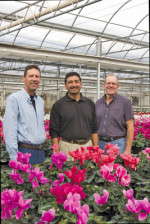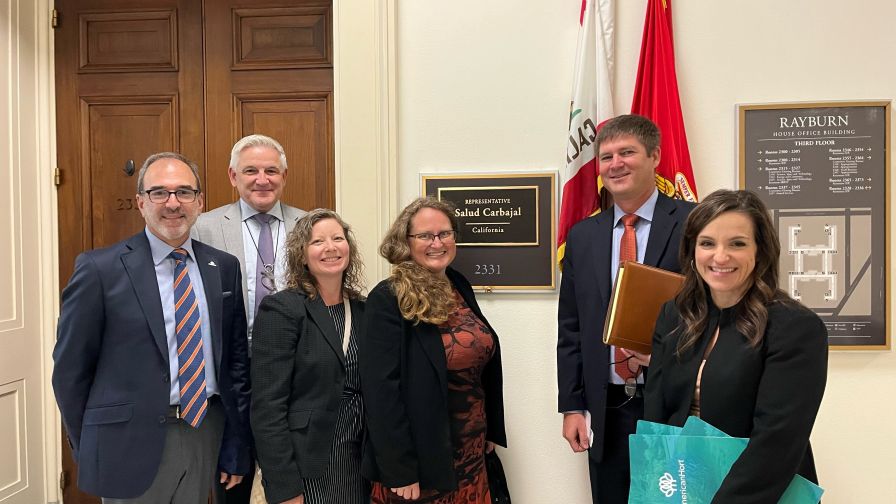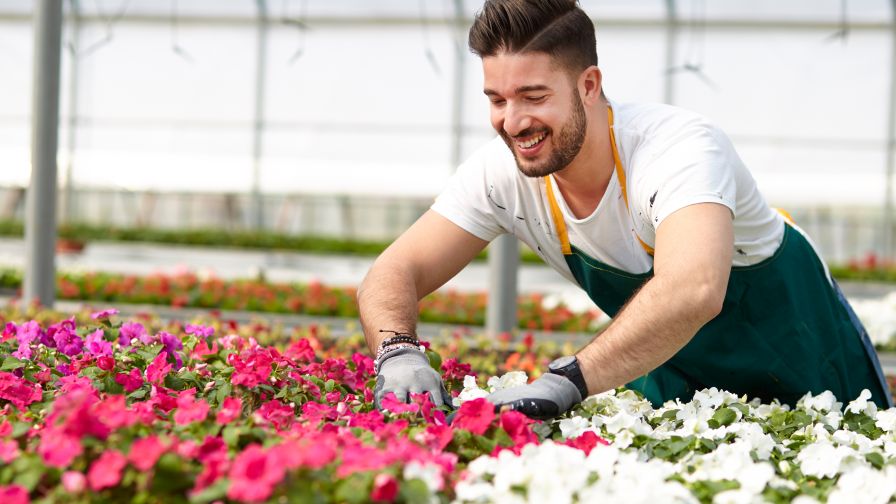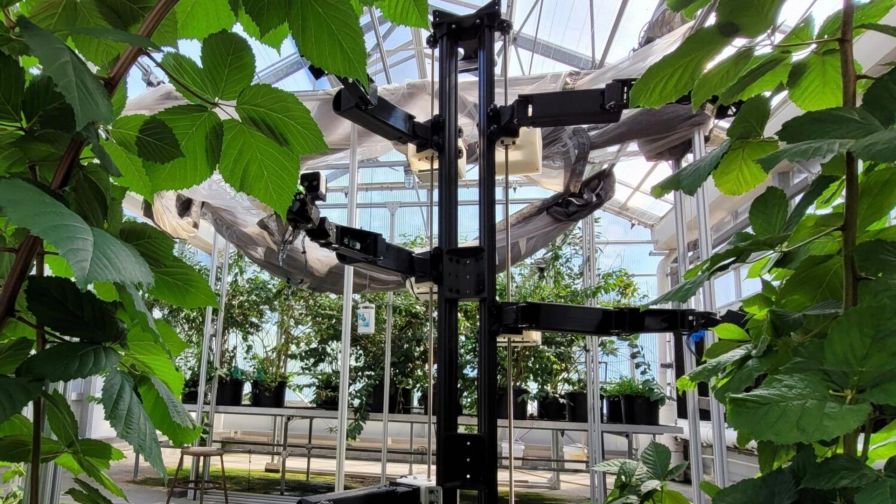Geothermal Growing

Heating greenhouses without natural gas is the goal of many growers. Corn, electricity and even some grasses are being used as alternatives, but one heating method being used by at least three greenhouse growers in the United States uses an renewable alternative energy source that results in no emissions — geothermal.
Geothermal heating uses water that is heated naturally by hot rocks as a radiant heating source in the greenhouse. Several areas in the Western United States have geothermal rocks to draw this source from, and Alex R. Masson Inc.’s location in Radium Springs, N.M., is one of the companies taking advantage of this clean heat.
In the 1980s, exploration was going on all around the American west for sources of geothermal heat, but many were looking for a source that could heat water to 299ËšF or more, hot enough to generate electricity. That type of heat wasn’t found and much of the research ended.
“Very few people in the U.S. are using geothermal as a direct use source as we are,” owner Alexander Masson says. “It’s used somewhat in the vegetable drying business and in a few other greenhouses. The New Mexico State University in Los Cruces uses geothermal to heat some buildings.”
When Masson opened its New Mexico greenhouse in 1986, it was not originally for the area’s hot rocks.
“The main reason we went to New Mexico from Kansas was for the light, the sun. The sun, according to the chamber of commerce, shines 360 days a year. The biggest advantage we have there is the high light in the wintertime,” Masson says. “The second reason was the dry atmosphere. This is a 4,000-foot-high desert. That dry atmosphere allows us to have very efficient air conditioning. The geothermal was an extra. We didn’t go there for the geothermal.”
When Masson first began exploration for geothermal sources, the hottest temperatures found were around 160ËšF — not really hot or efficient enough to use for heating. Through the years and with further study and understanding of the area’s rock formations, Masson’s is now able to heat greenhouses from this natural resource. And according to a 2006 report by the Geothermal Energy Association, many researchers believe there are still substantial hidden geothermal resources yet to be discovered.
Geothermal Has Its Advantages
In its geothermal system, Masson owns wells that are 400 feet deep and provide the company with 199ËšF water. Water is pulled through the rock formation and is then pumped into the greenhouses.
“The wells are fairly shallow, so we don’t have to pump very deep,” says Bruce Fitzgerald, general manager. “That’s the most unique part of the geothermal here.”
The hot water is drawn through a closed loop in the greenhouses. Hot water flows on one side of titanium plates, and the other side is a closed loop of fresh water. Masson explains that the comparative cost for heating with natural gas would be $1 more per square foot or $40,000 more per acre. The company is able to carry its own chrysanthemum stock because of the low heating costs.
“Geothermal allows you to run higher temperatures in certain situations than you would if you were using fossil fuels,” Fitzgerald says. “That’s one of the big advantages. And you consistently run it when the plants really need it, where if you were in Michigan in June, you’d just shut all your boilers down and not worry about it. But you may get a few cold nights. It allows us to run at optimum temperatures whenever we want, 365 days a year.”
The other obvious benefit is the lack of emissions. When Masson pumps the water out of the wells, a non-consumptive right says that water must be pumped back into the ground.
“Quite often, the water pumped back into the ground can cool down the resource,” Masson says. “We happen to have, on our land, two rock formations. One gives up the water and one takes it, so they don’t mix at all. That’s a very unique situation.” Masson also doesn’t have any royalties to pay, as do those that use land controlled by the Bureau of Land Management. The company has the geothermal capacity to build several more acres of greenhouses, should there be an increased demand for product. The geothermal capacity is definitely an advantage, but Masson isn’t so sure that it’s a selling point for his products.
“It makes us proud,” he says. “I don’t know that there are that many consumers who care that much to spend any money publicizing it. The growers want to have the very best product at the cheapest price.”
And although geothermal rocks are located in several areas in the United States, they may not all be ideal for growing.
“It’s in other parts of the country, but a lot of these places are pretty isolated, like where we are,” Fitzgerald says. “It’s a long way from the marketplace.”
Quality Product And Price
Alex Masson grows chrysanthemums, gerberas, cyclamen, kalanchoe, exacum, hibiscus and hydrangeas on 16 acres in Radium Springs and 8 acres in Linwood, Kansas. The company’s product is delivered to a wide area roughly carved out between the Rocky Mountains and the Mississippi River, as far west as Phoenix, and east to Minneapolis and Chicago.
Alex Masson’s focus on quality has been around since its founding by Alexander’s grandfather, James B. Masson, back in 1919. The business was passed down two generations and now employs 195.
“Our business philosophy is to provide a comfortable, enjoyable workplace,” Masson says. “We’re a very labor-intensive business and we have to have that in mind.”
There haven’t been many changes to the company over the years, except for adjustments in the crops that are produced and logistics. At one time, 95 percent of the company’s customers took delivery directly.
“Now, pretty close to half of our product goes to warehouses where others distribute from,” Masson says. “That’s probably the biggest change we’ve gone through.”
What those customers find when they open the warehouse doors is a product and packaging that won’t be found at any other Masson customer in that market. Catering to the specific needs of customers through differentiation allows the much wanted specifications that retail customers ask for.
“It may not be a piece of pottery or a basket that we manufactured and there’s no others in the world like it, but we’re saying, ‘We’re doing this for you and we’re not doing it for other people in that marketplace.’ So when the consumer goes into that particular store, it looks different than it did in another store.”










